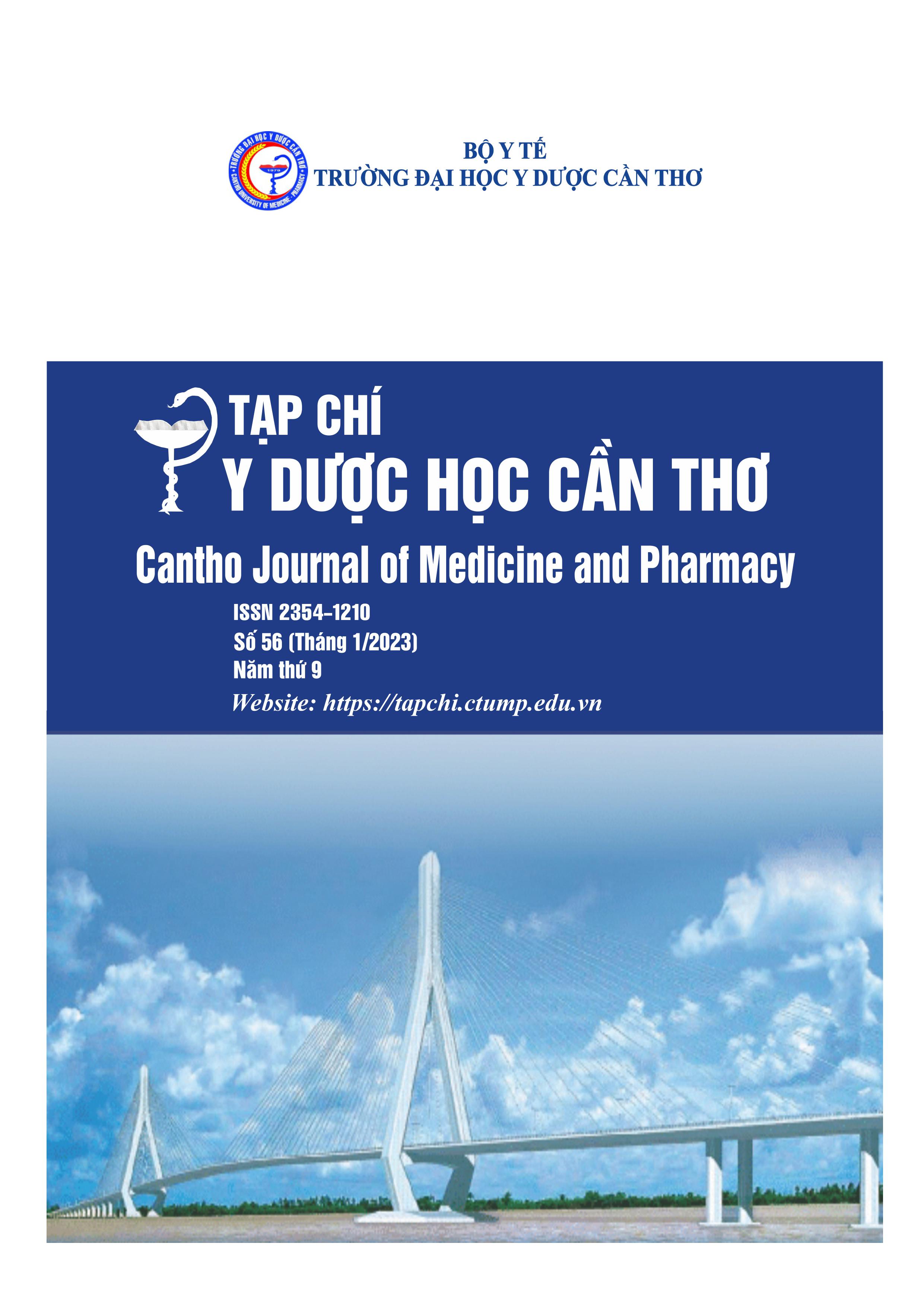STUDY ON THE CLINICAL, RADIOGRAPHICAL FEATURES AND THE EVALUATION IN THE THE RESULTS OF ZYGOMATIC COMPLEX FRACTURE MANAGEMENT USING MINI PLATES IN THONG NHAT HOSPITAL IN 2021-2022
Main Article Content
Abstract
Background: The zygomatic complex is one of the important bones of the mid-face, directly affecting the aesthetics and function of the craniofacial bone. Zygomatic complex was fixed to adjacent bone in sutures providing long – term stability and restoring the function and aesthetics of the cheekbone. Objectives: This is a crossectional, depscriptive study. To evaluate the clinical, X ray features and the results of zygomatic complex fracture treated by miniplates in Thong Nhat Hospital between 2021 and 2022. Materials and methods: A case series included 24 patients with unilateral zygomatic complex fracture. All the information of the patients participated in this study were recorded in epidemiological and clinical features including flat cheek, periorbital ecchymosis, subconjunctival hemorrhage, soft tissue wounds, trismus; and the X ray signs. After 3 months of surgery, patients were evaluated on the results of the management about function and aesthetics. Results: The study included 20 male and 04 female patients with average ages of 32,58±13,29. Clinical signs: 100% of patients had flattened cheeks, periorbital ecchymosis, subconjunctival hemorrhage; 100% trismus and pain on palpation. Radiographic features included continuous loss of bone border which was 100%. 3 months postoperative: 100% patients had good functional results, in terms of anatomy and esthetics 83,3% perfect, 16.7% was good. Conclusion: Management of zygomatic complex fracture with miniplate brought a good result for the patients.
Article Details
Keywords
Zygomatic complex fracture, miniplate, clinic
References
2. Tô Tuấn Dân (2019) Nghiên cứu đặc điểm lâm sàng, X quang, đánh giá kết quả điều trị phẫu thuật gãy hàm gò má bằng nẹp vít nhỏ tại Bệnh viện Đa khoa Thành phố Cần Thơ, năm 2018 - 2019, Luận văn chuyên khoa cấp II, Trường Đại học Y Dược Cần Thơ.
3. Trương Mạnh Dũng (2002) Nghiên cứu lâm sàng và điều trị gãy xương gò má- cung tiếp, Luận văn Tiến sĩ Y học, Trường Đại học Y Hà Nội.
4. Trương Mạnh Dũng, Nguyễn Danh Toản (2012), Đặc điểm lâm sàng, Xquang gãy gò má cung tiếp ở những bệnh nhân điều trị bằng nẹp vít tự tiêu tại bệnh viện Răng hàm mặt Trung ương và bệnh viện Việt Nam - Cu Ba, Tạp chí y học thực hành, (1):4.
5. Hoàng Ngọc Lan, Mai Đình Hưng (2014), Xây dựng hệ thống thang điểm đánh giá kết quả điều trị phẫu thuật bệnh nhân gãy xương hàm trên Lefort I, II và gò má cung tiếp, Y học Việt Nam, 11(1):5.
6. Lâm Hoài Phương (2007), Kỹ thuật điều trị tạo hình trong chấn thương và di chứng gãy cung tiếp gò má, Tạp chí y học thực hành, 575+576 (8):2.
7. Lê Minh Thuận (2018) Nghiên cứu đặc điểm lâm sàng, hình ảnh học và đánh giá kết quả điều trị gãy phức hợp gò má bằng phương pháp nâng gò má xoang hàm tại bệnh viện Đa khoa Trung ương Cần Thơ năm 2016-2018, Luận văn tốt nghiệp bác sỹ nội trú, trường Đại học Y Dược Cần Thơ.
8. Nguyễn Quốc Trung (1997) Nghiên cứu hình thái lâm sàng, phương pháp điều trị gãy xương gò má, cung tiếp tại Viện Răng Hàm Mặt Hà Nội 1993-1997, Luận văn thạc sĩ y học, Trường Đại học Y Hà Nội.
9. De Man K, Bax W. A. (1988), The influence of the mode of treatment of zygomatic bone fractures on the healing process of the infraorbital nerve, Br J Oral Maxillofac Surg, 26 (5):419-25.
10. Mendonca D, Kenkere D (2013), Avoiding occlusal derangement in facial fractures: An evidence based approach, Indian J Plast Surg, 46 (2):215-20.
11. Septa D, Newaskar V. P, Agrawal D, et al. (2014), Etiology, incidence and patterns of mid-face fractures and associated ocular injuries, J Maxillofac Oral Surg, 13 (2):115-9.


